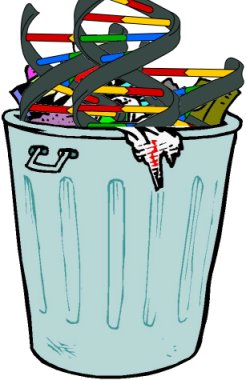
Eyn chaya kazo
which is Hebrew for “There can be no such creature.” Nevertheless, the more he studied, the more he was convinced of what he saw.
What revolutionary thing had Dr. Shechtman discovered? He discovered a kind of crystal that the scientific consensus said could not possibly exist. Until Dr. Shechtman’s discovery, it was thought that when substances form crystals, their atoms form an arrangement that is both ordered and periodic. An ordered arrangement just means there is a discernible pattern to the arrangement, and a periodic arrangement is one that repeats the same pattern in all directions. Thus, once I find the basic unit of a crystal’s pattern (called the “unit cell”), I can tell you what the entire crystal looks like by just repeating that pattern over and over again in three-dimensional space.
Well, chemists have been studying crystals for a long, long time, and because of the way atoms pack together, the mathematics of an ordered, periodic arrangement of atoms has been thoroughly worked out. These mathematics produced an absolute statement: There are only certain possible patterns for crystals. Some crystals can be rotated by one-half and end up looking the same as they did before they were rotated. Others can be rotated by one-fourth and end up looking the same as they did before. Others can be rotated by one-sixth and end up looking the same as they did before. However, it is impossible, quite impossible for a crystalline substance to have a structure that can be rotated by one-fifth or one-tenth and end up looking the same as it did before. Such atomic arrangements, called quasicrystals, simply cannot exist in this universe.
Nevertheless, that’s what Dr. Shechtman saw. Some of the crystals he saw forming in his experiments were quasicrystals. They were ordered, but not periodic. As a result, they had a structure that could be rotated by one-fifth or one-tenth and end up looking the same as it did before. As is typical for most scientists, he was initially very skeptical. But as he continued his experiments, he became more and more convinced of what he saw. Thus, as is typical for most scientists, he decided to communicate his findings to others.
That’s when the trouble began.
Continue reading “Former Scientific Heretic Wins the Nobel Prize in Chemistry”




